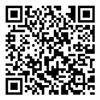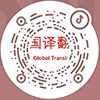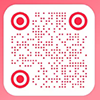Specific Solutions
Which Patent Translation Company Is the Best? It Comes Down to Technical Accuracy, Structural Rigor, and Legal Usability
In today’s world, where intellectual property is a core asset, patent translation is far more than simply “converting language.”
Whether you're submitting a PCT international application, entering the national phase in Europe, the U.S., or Japan, or preparing a domestic patent filing for overseas markets, the translation must be accurate in language, precise in terminology, compliant in structure, and logically sound.
So the real question becomes:
How do you choose a truly reliable patent translation provider?
From our perspective at Airui Translation, having worked with numerous clients on patent projects, we believe the difference between those who can do it and those who do it well lies in a company’s ability to combine responsibility and technical competence.
What Makes a Good Patent Translation?
To put it simply:
A good patent translation is not just readable — it must be precise, understandable, and submission-ready.
The essentials include:
1. Accurate and Consistent Terminology
Terms like “protective shell,” “heat-sealing film,” and “linkage assembly” may sound common, but their translations differ greatly across battery manufacturing, semiconductor packaging, or mechanical engineering. Consistency is key.
2. Structural Alignment and Logical Coherence
Every section — from the description, claims, abstract, to drawings — has a specific structure. Legal phrases like “characterized in that” must be correctly expressed in English, and terms like “the aforementioned” or “further comprises” require precise grammatical reconstruction.
3. Compliance with Target Country Requirements
Each patent office has its standards. For example, the EPO prefers concise logic and avoids ambiguity, while the JPO favors short, direct sentences. A capable translation firm must be familiar with these requirements.
4. Dedicated Review and QA Process
A typical patent can be tens of thousands of words. Without a second-round review, mistakes in terminology, phrasing, or numbering are inevitable. A professional company should follow a complete workflow: translator → reviewer → format specialist → final QC.
Why Can’t Just Any Translator Handle Patent Translation?
You might have heard of the following issues:
Translations that are technically correct but fail legal review
Claims that read like casual English, lacking legal rigor
Inconsistent formatting, misnumbered references, or mismatched figures
Late deliveries, missing submission windows
These aren’t language problems — they’re issues of project management, subject-matter understanding, and intellectual property know-how.
At Airui Translation, we often say:
“Translating a patent isn’t just translating words — it’s converting a technical document into a legally enforceable right.”
What Should a Patent Translation Company Be Able to Do?
In short: Understand the technology, follow the structure, and ensure legal usability.
Key capabilities include:
Translators with engineering or scientific backgrounds, who truly understand mechanisms, processes, and diagrams
Familiarity with global patent terminology and filing practices
Support for multiple language pairs (CN-EN, EN-CN, JP-CN, KR-EN, etc.)
Centralized termbase and terminology management system
Deliverables formatted per WIPO standards, ready for submission
Real-world experience with patent firms, law offices, and corporate IP departments
Why Do So Many Clients Choose Airui Translation?
As a language service provider specialized in technical translation, Airui Translation offers:
A team of native translators with over 10 years of patent translation experience
Long-term partnerships with patent agencies, R&D institutions, and tech companies
Full support for international patent filings across PCT, EP, US, JP, and KR
Internal QA system with translation → review → formatting → quality control
NDA protection, version tracking, marked-up drafts, and rush delivery options
We believe translation is not a transaction — it's a safeguard for innovation.
Final Thoughts
Which patent translation company is best? It’s not about who’s cheapest, or who advertises the most — it’s about who truly understands the logic behind patents.
Ask yourself:
Can they translate your technical ideas into a legally valid document?
Can they help you pass national phase reviews smoothly?
Can they manage your timeline, terminology, and multi-version submissions?
If you're seeking a reliable, long-term patent translation partner, talk to Airui Translation. We’re happy to review your draft, suggest terminology improvements, and offer formatting advice — before we even start the translation.
Because we firmly believe:
A good translation isn’t just readable — it protects innovation.
— Airui Translation / Patent Language Services Team


















